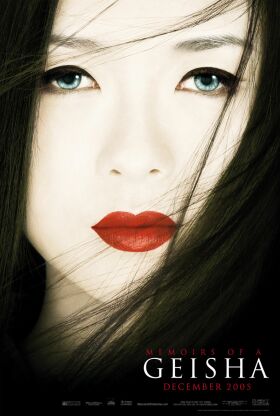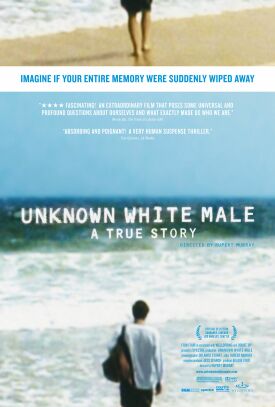Memoirs of a Geisha
Rob Marshall’s Memoirs of a Geisha, adapted from the novel by Arthur Golden by Robin Swicord and Doug Wright, makes an interesting companion piece to the new Pride and Prejudice. Both movies take a story set in a very different time and culture from our own, carefully remove all but the most superficial and picturesque vestiges of that time and culture and give us the story stripped down to its emotional essentials. The result is that both movies are stunning to look at while their heroines — Elizabeth Bennet (Keira Knightley) and the geisha Sayuri (Ziyi Zhang) — don’t quite convince us that they belong to their ostensible time and place. Both look more (Ms Knightley) or less (Ms Zhang) like modern girls dressing up. But the film-makers in both cases are probably right to think that this is what audiences prefer. Essentially, they are taking the remoteness of the setting — Regency England in the case of Pride and Prejudice, pre-war Japan in Memoirs of a Geisha — as a kind of permission to indulge us in our guilty pleasure of savoring an old-fashioned but now politically incorrect form of romance.
In other words, the heroines of both films have excellent excuses for not being the strong, independent, self-starting types that women in movies with a contemporary setting are expected to be and almost invariably are. They live under repressive patriarchal systems which force them into dependency on men. Thus the age-old paradigm, that of the fair and virtuous maiden who must wait in hope for her prince to come and rescue her — of which never until now have people grown tired — is briefly allowed out of its feminist-inspired quarantine. It’s OK, it seems, if the romance is all supposed to have happened a long time ago and in a different world. Not coincidentally, both films include a ritual obeisance in the feminists’ direction, briefly clucking their cinematic tongues about how unjust and wrong it all was. And then they get on with their retro-chic romances.
Geisha
’s is even more retro than Pride’s because its version of Prince Charming, played by Ken Watanabe, is old enough to be the father of his lady-love, Sayuri. In fact, he first encounters her when she is nine years old and buys her a flavored ice in a scene which must seem slightly creepy to an age so sensitized to pedophilia as ours. Sayuri, at this point known as Chiyo and played by Suzuka Ohgo, is a poor and motherless child sold by her father to a geisha house in Kyoto. Because she has “eyes the color of rain,” she is spotted at once by the house’s most celebrated geisha, Hatsumomo (Gong Li), as a potential rival and quickly reduced to the status of slave with no hope of geisha training. But her beauty and potential value to the house cannot remain unnoticed forever, and as a teenager she is befriended by another older geisha called Mameha (Michelle Yeoh), who turns her into the most celebrated geisha of all. As it happens, there is a precise measure of her success in the form of the price her virginity brings when it is auctioned off for15,000 yen — even more than Hatsumomo’s brought years ago.
But through everything she treasures up her secret love for Mr Watanabe’s character, whom she knows only as “the Chairman.” When she encounters him again, she is forced by Mameha to charm his friend, Nobu (Kôji Yakusho), who once saved the Chairman’s life when they were soldiers together in Manchuria. This means that the Chairman cannot become his friend’s rival in love, and it looks as if Sayuri’s passion for him must forever remain unfulfilled. After the war and Japan’s defeat, poverty and the end of the geisha’s way of life only seem to drive her farther from her heart’s desire — and then, when she unexpectedly encounters the chairman again, a stunning act of betrayal seems to put an end to her hopes forever. “It is not for a geisha to want,” she says in voiceover. She is expected to entertain men by dancing and singing and pouring tea, and by conversation, but “the rest is secret. No geisha can ever hope for more.”
It is here that Memoirs of a Geisha parts company with the new Pride and Prejudice. For although Jane Austen portrays Elizabeth as being not only an attractive person but a mistress of the feminine arts appropriate to her times, the film is embarrassed by these and refuses to allow Elizabeth to charm us with anything other than her beauty and spirit. Geisha, by contast, stresses those man-pleasing skills that were prized during the period of the film’s setting, even though Sayuri’s spectacular geisha dance appears to owe a lot more to Broadway — Mr Marshall’s previous film was Chicago — than it does to actual geisha performances. Also, where Miss Knightley’s Elizabeth is sold to us as a nature-girl with little or no interest in the arts of feminine adornment, the geisha’s elaborate dress, hair and make-up remind us of a truth that it is now in rather poor taste to mention, namely that “agony and beauty” go together.
Both films, like the other Jane Austen novels — or Snow White and the Seven Dwarfs or Cinderella or Sleeping Beauty or any number of other familiar romances — make the same point in the end. It is that the girl who waits, while remaining true to her heart, must eventually be rewarded. Talk about the rest being secret! Better be careful who you say that to. The only reason the feminist assertiveness trainers aren’t all over this one is that poor Sayuri belongs to a different world. “We don’t become geisha to pursue our own destiny,” she reminds us in her lugubrious voiceover. “We become geisha because we have no choice.” Not like us, eh? Nowadays, with every girl free to pursue her own destiny, in love as in other things, we find — well, actually we find that things aren’t all that different, at least according to Maureen Dowd’s new book, Are Men Necessary? That the myth of unlimited “choice” is a cruel hoax may be one reason why, even today, people never seem to tire of such old fashioned romances as Memoirs of a Geisha and Pride and Prejudice.
Discover more from James Bowman
Subscribe to get the latest posts to your email.








